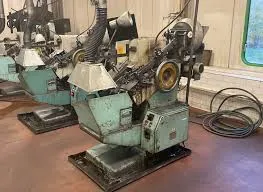
-
 Afrikaans
Afrikaans -
 Albanian
Albanian -
 Amharic
Amharic -
 Arabic
Arabic -
 Armenian
Armenian -
 Azerbaijani
Azerbaijani -
 Basque
Basque -
 Belarusian
Belarusian -
 Bengali
Bengali -
 Bosnian
Bosnian -
 Bulgarian
Bulgarian -
 Catalan
Catalan -
 Cebuano
Cebuano -
 Corsican
Corsican -
 Croatian
Croatian -
 Czech
Czech -
 Danish
Danish -
 Dutch
Dutch -
 English
English -
 Esperanto
Esperanto -
 Estonian
Estonian -
 Finnish
Finnish -
 French
French -
 Frisian
Frisian -
 Galician
Galician -
 Georgian
Georgian -
 German
German -
 Greek
Greek -
 Gujarati
Gujarati -
 Haitian Creole
Haitian Creole -
 hausa
hausa -
 hawaiian
hawaiian -
 Hebrew
Hebrew -
 Hindi
Hindi -
 Miao
Miao -
 Hungarian
Hungarian -
 Icelandic
Icelandic -
 igbo
igbo -
 Indonesian
Indonesian -
 irish
irish -
 Italian
Italian -
 Japanese
Japanese -
 Javanese
Javanese -
 Kannada
Kannada -
 kazakh
kazakh -
 Khmer
Khmer -
 Rwandese
Rwandese -
 Korean
Korean -
 Kurdish
Kurdish -
 Kyrgyz
Kyrgyz -
 Lao
Lao -
 Latin
Latin -
 Latvian
Latvian -
 Lithuanian
Lithuanian -
 Luxembourgish
Luxembourgish -
 Macedonian
Macedonian -
 Malgashi
Malgashi -
 Malay
Malay -
 Malayalam
Malayalam -
 Maltese
Maltese -
 Maori
Maori -
 Marathi
Marathi -
 Mongolian
Mongolian -
 Myanmar
Myanmar -
 Nepali
Nepali -
 Norwegian
Norwegian -
 Norwegian
Norwegian -
 Occitan
Occitan -
 Pashto
Pashto -
 Persian
Persian -
 Polish
Polish -
 Portuguese
Portuguese -
 Punjabi
Punjabi -
 Romanian
Romanian -
 Russian
Russian -
 Samoan
Samoan -
 Scottish Gaelic
Scottish Gaelic -
 Serbian
Serbian -
 Sesotho
Sesotho -
 Shona
Shona -
 Sindhi
Sindhi -
 Sinhala
Sinhala -
 Slovak
Slovak -
 Slovenian
Slovenian -
 Somali
Somali -
 Spanish
Spanish -
 Sundanese
Sundanese -
 Swahili
Swahili -
 Swedish
Swedish -
 Tagalog
Tagalog -
 Tajik
Tajik -
 Tamil
Tamil -
 Tatar
Tatar -
 Telugu
Telugu -
 Thai
Thai -
 Turkish
Turkish -
 Turkmen
Turkmen -
 Ukrainian
Ukrainian -
 Urdu
Urdu -
 Uighur
Uighur -
 Uzbek
Uzbek -
 Vietnamese
Vietnamese -
 Welsh
Welsh -
 Bantu
Bantu -
 Yiddish
Yiddish -
 Yoruba
Yoruba -
 Zulu
Zulu
Top Manufacturers of Scaffolding Pipe Thread Rolling Machines for Industrial Applications
The Evolution and Importance of Scaffolding Pipe Thread Rolling Machines
In the construction industry, safety and efficiency are paramount, and scaffolding plays a crucial role in ensuring both. One of the critical components of scaffolding systems is the pipes that form the framework. The manufacturing of these pipes often involves specific threading processes, and this is where scaffolding pipe thread rolling machines come into play. This article explores the significance of these machines, their evolution, and the companies leading the industry.
The Need for Scaffolding Pipe Thread Rolling Machines
Scaffolding structures provide essential support during construction projects, enabling workers to reach heights safely. In this context, the quality of the pipes and their threading is vital. Traditional methods of threading can be time-consuming and labor-intensive, leading to increased costs and potential quality issues. The introduction of thread rolling machines revolutionized this process by providing a faster, more efficient, and consistent means of creating threads on scaffolding pipes.
Thread rolling machines utilize a cold-forming process, which produces threads without removing material, thus enhancing the strength of the pipe. This process reduces waste and improves the overall integrity of the scaffolding system, leading to enhanced safety for workers. As the demand for scaffolding solutions continues to grow, so does the significance of these machines in providing reliable and robust scaffolding components.
Evolution of Thread Rolling Machines
Over the years, scaffolding pipe thread rolling machines have evolved significantly. Early models were cumbersome, requiring manual intervention for operation and maintenance. However, technological advancements have led to the development of automated and semi-automated machines that enhance efficiency and precision.
scaffolding pipe thread rolling machine companies

Modern machines come equipped with computerized controls, allowing for greater flexibility in thread specifications. This automation reduces the likelihood of human error and increases the production rate, enabling manufacturers to meet the growing demands of the construction industry promptly. Moreover, innovations in materials and design have led to machines that are more durable and energy-efficient, further benefitting companies involved in scaffolding production.
Leading Companies in the Industry
Several companies have established themselves as leaders in manufacturing scaffolding pipe thread rolling machines. These companies are known for their dedication to quality, innovation, and customer service. One notable name is Baileigh Industrial, which offers a range of thread rolling machines that are well-regarded for their reliability and performance. Their machines are equipped with advanced features that cater to various manufacturing needs in the scaffolding sector.
Another prominent player is Harris Products Group, which provides a diverse range of thread rolling machines tailored for different industries, including construction. Their commitment to research and development ensures that their machines remain at the cutting edge of technology, offering customers solutions that meet current industry standards.
ROMI is also worth mentioning, as it specializes in heavy machinery and has expanded its offerings to include high-performance thread rolling machines. Their products are characterized by robust construction and user-friendly interfaces, making them suitable for companies looking to enhance their production capabilities.
Conclusion
The scaffolding pipe thread rolling machine is an indispensable tool in the construction industry, contributing to the efficiency and safety of scaffolding systems. As technology continues to advance, these machines will likely become even more sophisticated, meeting the evolving needs of the market. Leading companies in this space are recognizing the importance of investing in innovative solutions, allowing them to maintain a competitive edge in a rapidly changing industry. As construction projects become more complex and demanding, the role of these machines will only grow in importance, ensuring that scaffolding remains a safe and reliable support system for workers.
